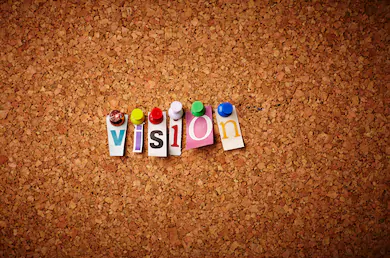
Vision Boards – a Personal Strategic Review?
I had heard of vision boards, but I didn’t know much about them: was this just a trendy way of writing up some new year’s resolutions? I decided to look into it and found myself quite intrigued by what I discovered.
Essentially, a vision board is a collection of images and pictures representing objectives and dreams for a chosen period of time, often a calendar year – a “mini bucket list” if you will (or in Juniper language, a “personal strategic review”), where a vision and associated goals can be captured in a visual way.
The benefit of conducting such an exercise is primarily to help with focusing on personal goals throughout the year (without allowing life to get in the way as it sometimes does). The vision board ensures accountability, too, by keeping it on display where it can be seen often, and sought out as a source of motivation and inspiration.
Areas of focus are personal, of course, as everyone has different aspirations for the 12 months ahead. Topics can include the following :
- People – are there any people that you would like to invest in this year? What priorities do you have for your family and family time?
- Career – do you have a key set of objectives you would like to achieve? Are there specific steps you would like to take in your professional development?
- Learning – is there something new you would like to learn or a skill you would like to acquire? It’s OK if this is purely for the enjoyment factor!
- Places – are there particular places you would like to visit - near or far? This could be somewhere within an hour’s drive from home or a destination you have always wanted to discover further afield.
- Health and well-being – are you motivated to make changes in your life to become healthier all-round? Perhaps you can test out a different way of managing your time or make realistic changes to your diet and exercise?
- Money – is there a certain amount of money you would like to earn, donate, invest, save, borrow or pay off over the course of the year?
- Entertainment – small ticket items such as which books to read or films to watch can also make it onto your vision board
- Inspirational or motivational quotes – these can be included but be careful that they mean something to you and don’t just look or sound good – they won’t serve their purpose otherwise
- #LivingMyBestLife – how can you ensure that you live the best version of your life this year? This might involve thinking about big picture goals or smaller ways in which you would like to contribute to making the world a better place for everyone.
But why create a vision board instead of just writing a list of goals to stick to the fridge door? The answer is in the process and the output. The process of visualisation helps us in establishing and achieving our goals in the same way that it has helped athletes over decades. In this video, Emily Cook, former US Olympian tells us more about the benefits of visualisation. (Of course, Muhammed Ali was also a pioneering believer of having a clear vision of winning before entering the ring to stand a greater chance of actually winning.) Essentially, once you have “felt” the goals, they become more real. Having pictorial reminders of them only embeds them further, making you more likely to achieve them.
Creating the vision board is the fun part! Simply take a blank canvas or pin board and stick images to it that speak to you about your goals. For example, a photo of you at your graduation ceremony may remind you that you’re going to take a specific professional qualification this year and a magazine cut out of the Eiffel Tower tells you that you’re booking that trip to Paris no matter what.
The great thing about vision boards is that like Lego, they are for anyone aged 4-99! They can be done at home alone or with family members or at the office in your teams. They are fun to create and they generate discussions you may not otherwise have. They can also give you guidance when life gets busy with “non-vision board stuff”. After all, if you don’t know where you’re going, how will you know when you’ve got there?
So why not have a go and let us know how you get on?
(By the way, I’ll post a photo from Legoland when I’m there later this year…)